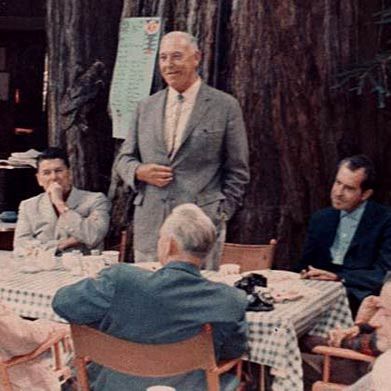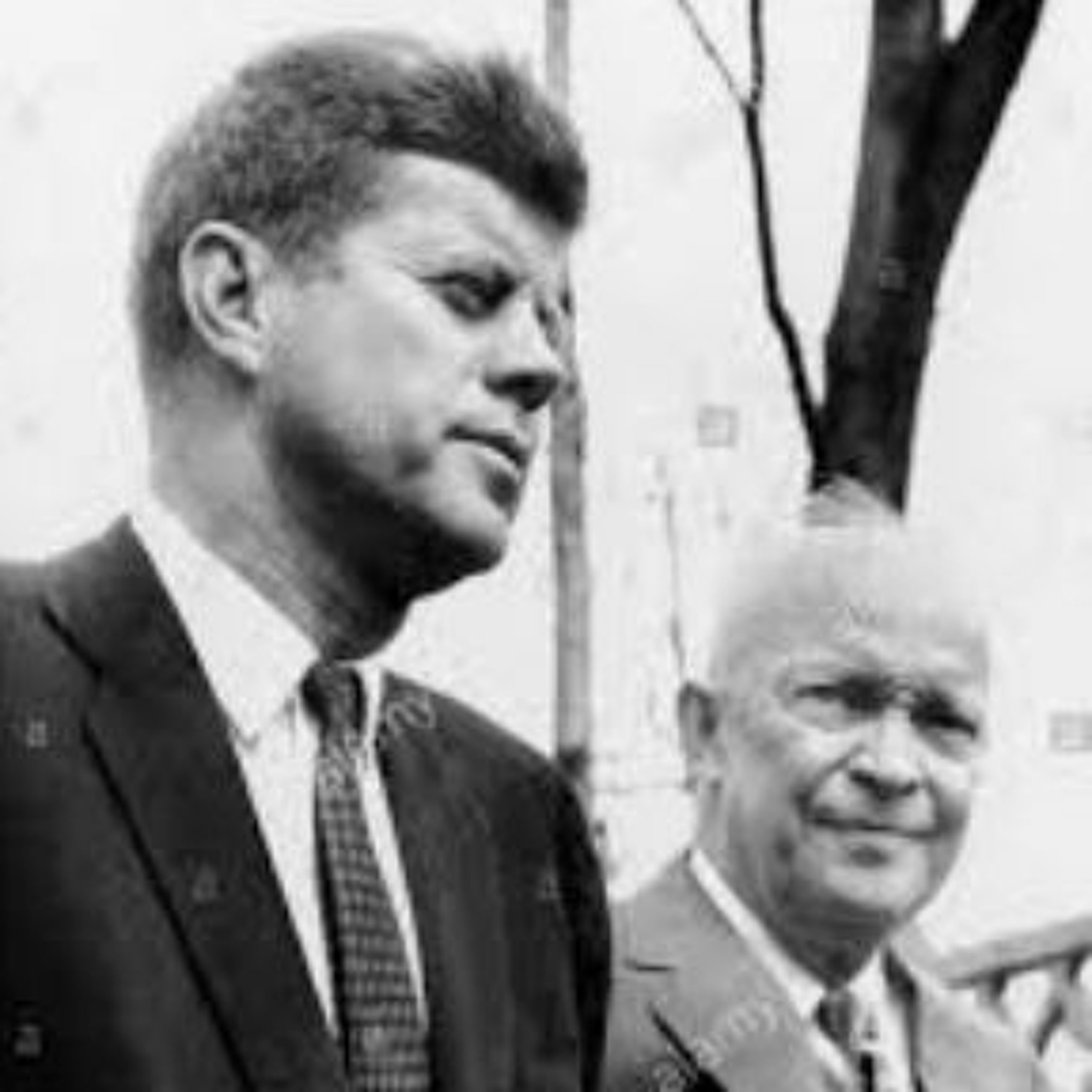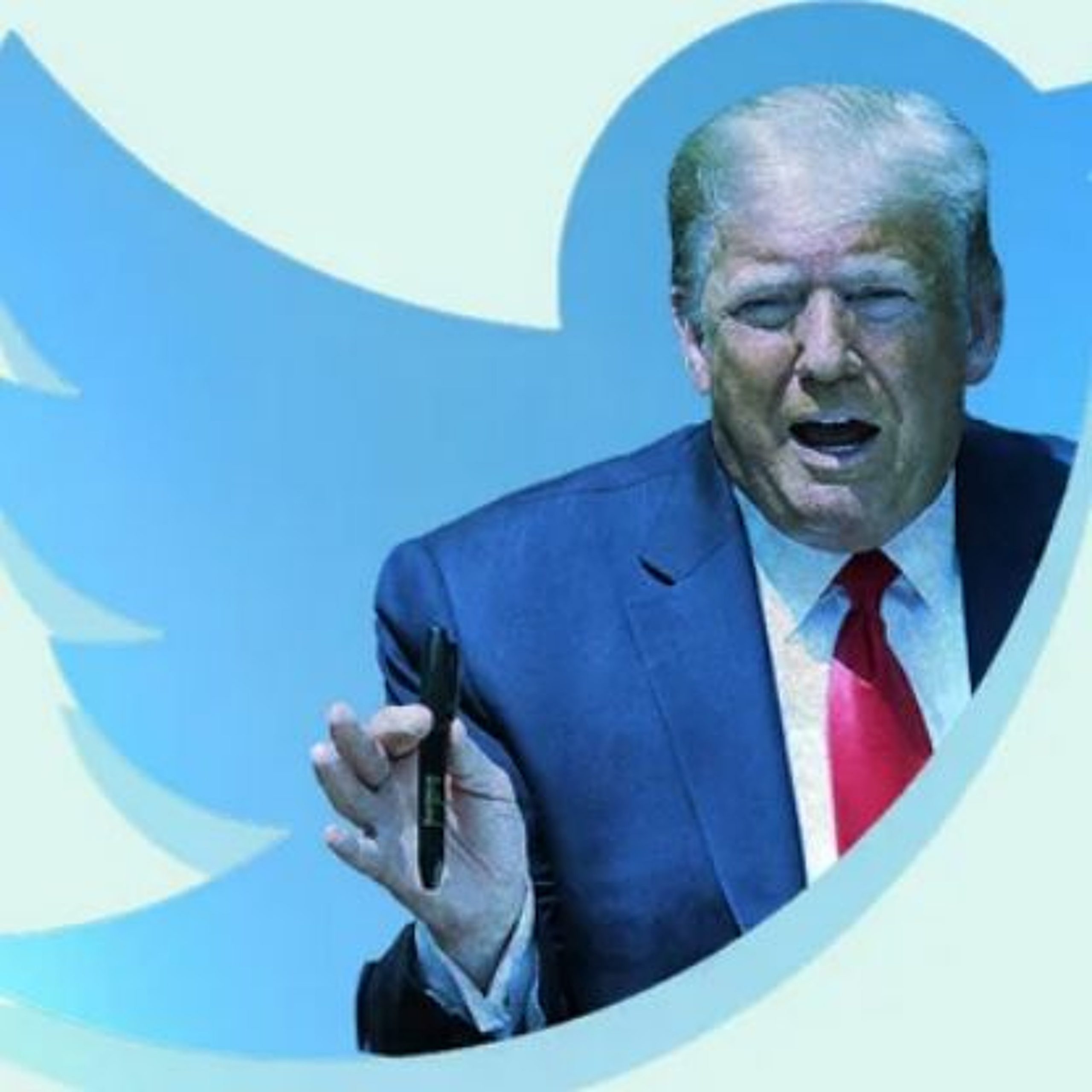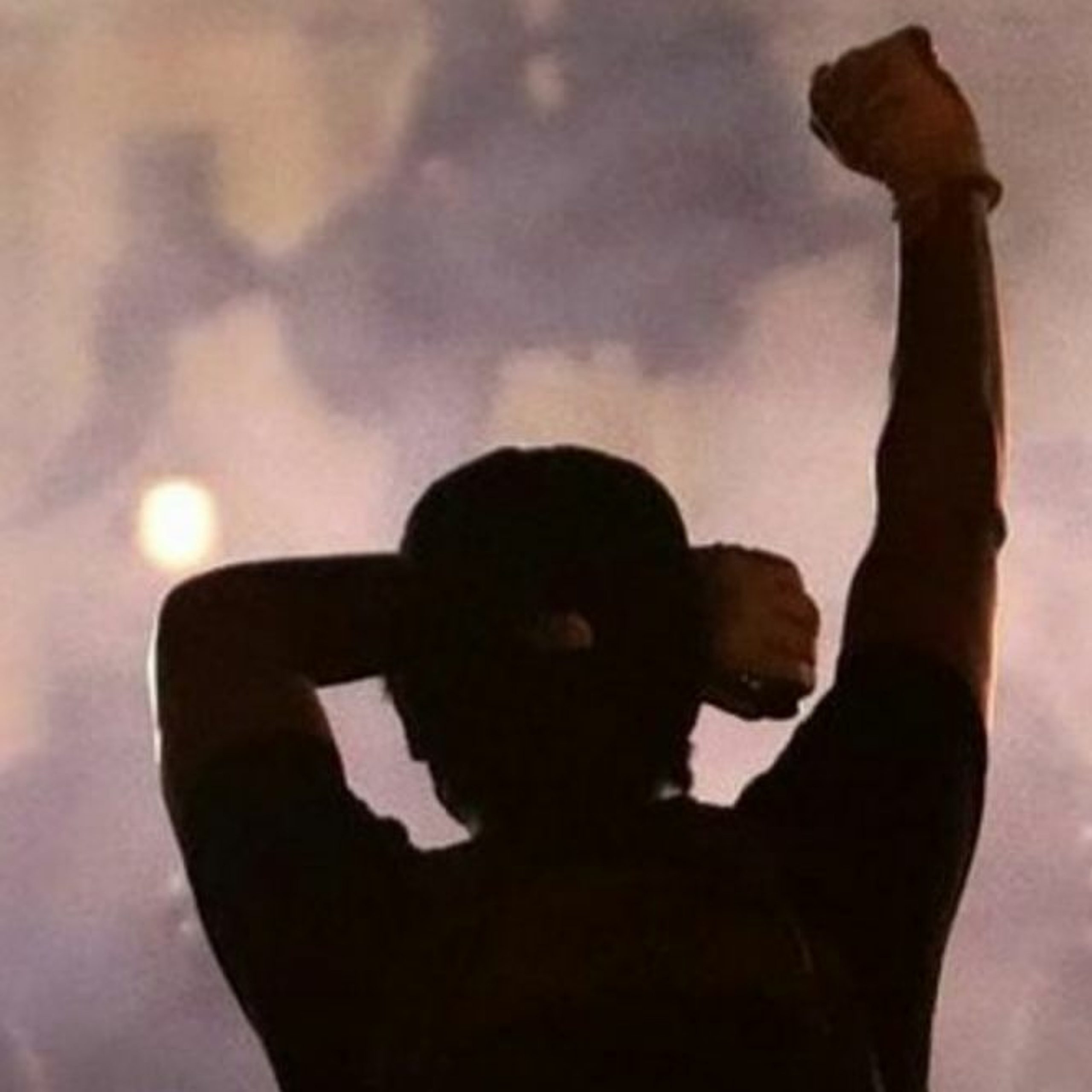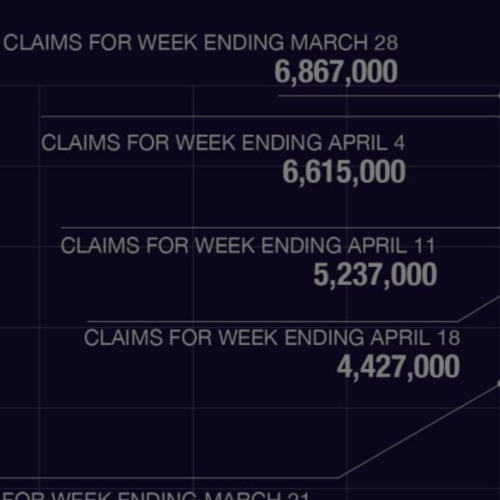America, I Ain’t Marchin Anymore
He points out the difference between Trump and Reagan and wonders what the most effective way those opposed to the new President’s policies can force him to change tack. Is protest marching enough?
The FRDH Podcast is hosted by internationally acclaimed journalist Michael Goldfarb and is about History. The History he has reported on; the History he has written about; and the long History he has lived.
You can subscribe to the podcast on iTunes, YouTube and Soundcloud, and you can follow us on Facebook and Twitter.
Full Transcript of this episode:
Apologies in advance for the random nature of this essay. I feel a bit like Colonel Kurtz at the end of Apocalypse Now, free associating into his tape recorder.
On the side of a recently demolished building in London (nothing is safe here from the real estate speculators) was a piece of art by the street artist Banksy: it depicted his alter ego, a city rat, looking up at a slogan: “If Graffiti Changed Anything, It Would Be Illegal.”
Always made me smile when I went past.
It was a witty echo of anarchist Emma Goldman, “If voting changed anything, they would make it illegal.”
Contemplating the beginning of the new political era with its concentration of power in a radical Republican Party and an unpresidented Chief Executive who seem hell bent on ignoring the wishes of the majority of the electorate who voted Democrat, what else might be illegal if it changed anything?
Protest marching.
I have been on enough protest marches and reported on others to say with some certainty: they really don’t change much. Marches are more rituals today than tools for political change.
It wasn’t always this way. There was a time in recent American history when marches were organized with the intention of changing things and they were, if not illegal, challenged by the authorities sometimes politely, sometimes with extreme violence, if they had a chance in hell of achieving their goals.
It is hard to explain to those who weren’t alive the intensity and excitement of the 1963 March on Washington. Reverend Martin Luther King’s speech was the highlight of the day and has taken on a life of its own in the history of America. But you had to watch the whole event broadcast live as it happened to understand its power. The images knifed into viewers preconceptions and began to shift them. Integrated crowds marching together with no violence.
Celebrities, integrated also, being interviewed. Sitting at home on a sultry end of August day, age 12, I watched. I remember Marlon Brando showing a TV reporter a cattle prod and explaining in a deadpan, cool, matter of fact way how it was used by law enforcement officers in the Deep South to police protest. Was Sidney Poitier standing next to him or James Baldwin at that point? There are plenty of photos of the day floating around the internet to check out who it was.
Eighteen months later, images from another march, from Selma Alabama to the state capital in Montgomery came into living rooms. That march — actually a series of marches — genuinely challenged the entire social and political order of the Jim Crow South and it was met with shocking violence and murder. The images galvanized public opinion and led to the passage of Lyndon Johnson’s Voting Rights Act.
The success of civil rights marches passed on to the anti-Vietnam War movement. Demonstrations/protest usually centred around marches. I marched. 1969, October, in the Bay Area, Moratorium to end the War, a global protest to end the war. Washington, May 1970, following the Kent State massacre — the paradigm of how if marching changed anything they would make it illegal & shoot to kill to prove it.
I even found myself leading a sub-group of marchers. The weather was Washington DC hot: sultry, swampy. I ducked into the Smithsonian Insititution’s American History museum to get some air conditioning. Came out on the Constitution Avenue exit just as a band of Yippees were merrily marching towards the White House. They looked pretty stoned. I tagged along. At the corner of 15th and Constitution where they had to turn right to reach the executive mansion, they turned left.
“Not that way, Yippees. This way!!” I shouted. “Follow me!!!!”
The column wheeled right with me in the lead and we went along the Eastern perimeter of the White House grounds. The entire place was encircled with District of Columbia buses with the air let out of the tires. They formed an effective barricade. Half way up 15th Street I happened to look up and on the buildings across the street saw a range of armed cops drawing a bead on me. I slowed down and let the redirected wannabe revolutionaries march past.
Eventually, assorted demonstrators ended up at Jackson Square, we pushed up as far as the bus cordon and sat down … until tear gas cleared us away.
My unprovable theory of history is that that demonstration is the moment when something changed. People like us had been killed, the war carried on. Two years later, over Christmas, Hanoi was bombed. Had all the marching changed a damned thing?
Marching stopped being about bringing pressure to achieve a goal. It became a way of telling government, “Hello, we’re still here.”
I think that very phrase was used from the podium in May 1981, a few months after Ronald Reagan had taken office. 100,000 of us marched from the Lincoln Memorial over the Arlington Bridge to the Pentagon. I walked with friends of friends, one of whom had been a medic in Vietnam and was now working as an Emergency Medical Services driver and nurse in Brooklyn. As we walked over the bridge police helicopters buzzed us. “Those are they’re not there,” he laughed. Huh? He explained he had been stationed near the border with Laos in 1970 and when they saw American choppers flying into that supposedly neutral country, “Officers told us, those choppers they’re not there.”
At the Pentagon, instead of tear gas, we were confronted by a small group of clean-cut young Christians lead by a handsome, well-dressed Korean, from the Unification Church, the cult founded by Sun Myung Moon.
The whole event was ritual, the goals of the march — to protest against a smorgasbord of policies the still young Reagan Administration was pursuing and to demand action on those it was not, from war in El Salvador, divesting American investment in South Africa, jobs, fairer economy, an end to racism, support for gay rights — were simply too broad.
Marching lost meaning for me then although clearly not for others. People march in Washington all the time, to no great purpose, beyond comradeship and a few seconds of coverage on television. People remember the phrase Million Man March on Washington. Does anyone remember what permanent change in society came out of it?
There’s a whole page in Wikipedia devoted to listing Washington marches. From the political Left or Right, male or female they go on all the time. Some are serious, some are ridiculous: Do you remember the Million Puppet march of 2012? It has a wikipedia page to itself.
Anyway, journalism is a great displacement activity, I don’t believe marching does much but others do and as a public radio reporter I have continued to march: in formation with the Shankill Road Orange Lodge on the 12th of July in Northern Ireland; with the Countryside Alliance of Britain as it demanded the right to hunt foxes. On a miserably cold and wet February day I went out with anti-war protesters in Amman, Jordan just before the Bush Administration’s invasion of Iraq in 2003. My translator assured me that half the 2000 people on that march actually were mukhabarat, Jordan’s internal security police.
That same day more than a million and a half people took to the streets of London to protest the war.
February 15, 2003 Stop the War March in London
The war went ahead anyway.
Today, marching seems to be a retro activity, an act of political nostalgia more than a tactic in a wider strategic campaign to bring about specific social/political change. I wonder what the future of political marching is. Clearly, it has become a fun day out and chance to be among like-minded people who wanted to make “their voices heard,” or “show politicians I disagree.”
Yes, well, thank you for sharing.
But back in the civil rights era, when marching actually changed the world those who participated had more on the line than a few blisters at the end of a long walk.
If protest marching is ever going to be a useful political tactic again, those who put one foot in front of another are going to have be willing to take a bit more risk.
I wonder if the new era we are entering into will feature more than marches: wide ranging acts of civil disobedience with jail time a possible consequence of one’s actions. Congressman John Lewis has achieved greater national prominence in the last few days than he has had for decades. Lewis, of course was in the front row of that march from Selma to Montgomery Alabama and had his skull fractured by police.
I won’t march again until what’s at stake on the march is something so specific and so important the authorities want to make marching illegal. I won’t put one foot in front of the other unless there is a real risk of having my skull fractured for supporting an important and achievable goal — one that I know will make American society better.
I will, however, be in Washington for the Inauguration of Donald Trump and the Women’s March next day. I’m recording a documentary for BBC Radio 4 but really I will be trying to make a start on the First Rough Draft of this New Era in History.
The FRDH Podcast is hosted by internationally acclaimed journalist Michael Goldfarb and is about History. The History he has reported on; the History he has written about; and the long History he has lived.
You can subscribe to the podcast on iTunes, YouTube and Soundcloud, and you can follow us on Facebook and Twitter.
You can also donate to keep the episodes coming.
